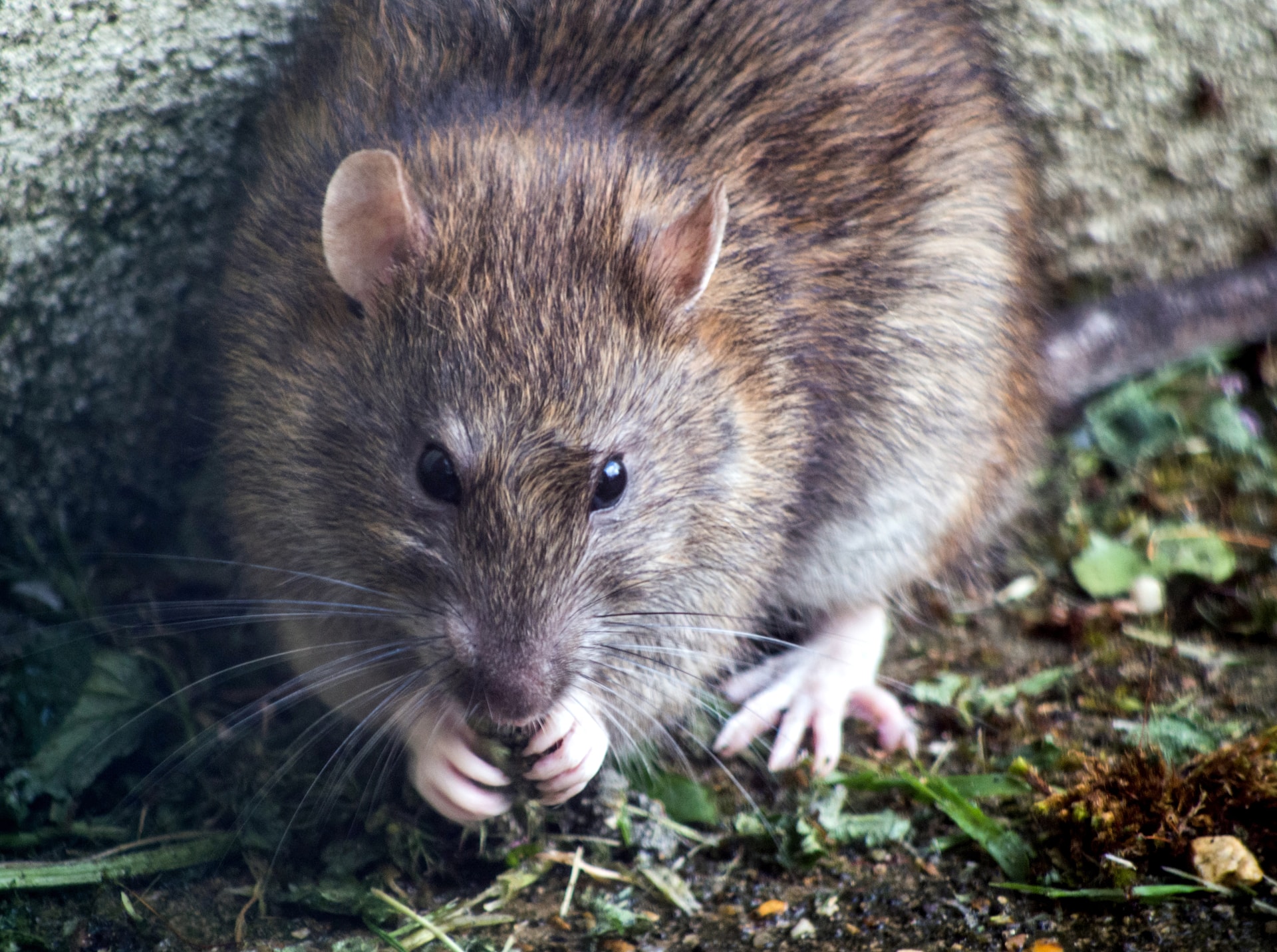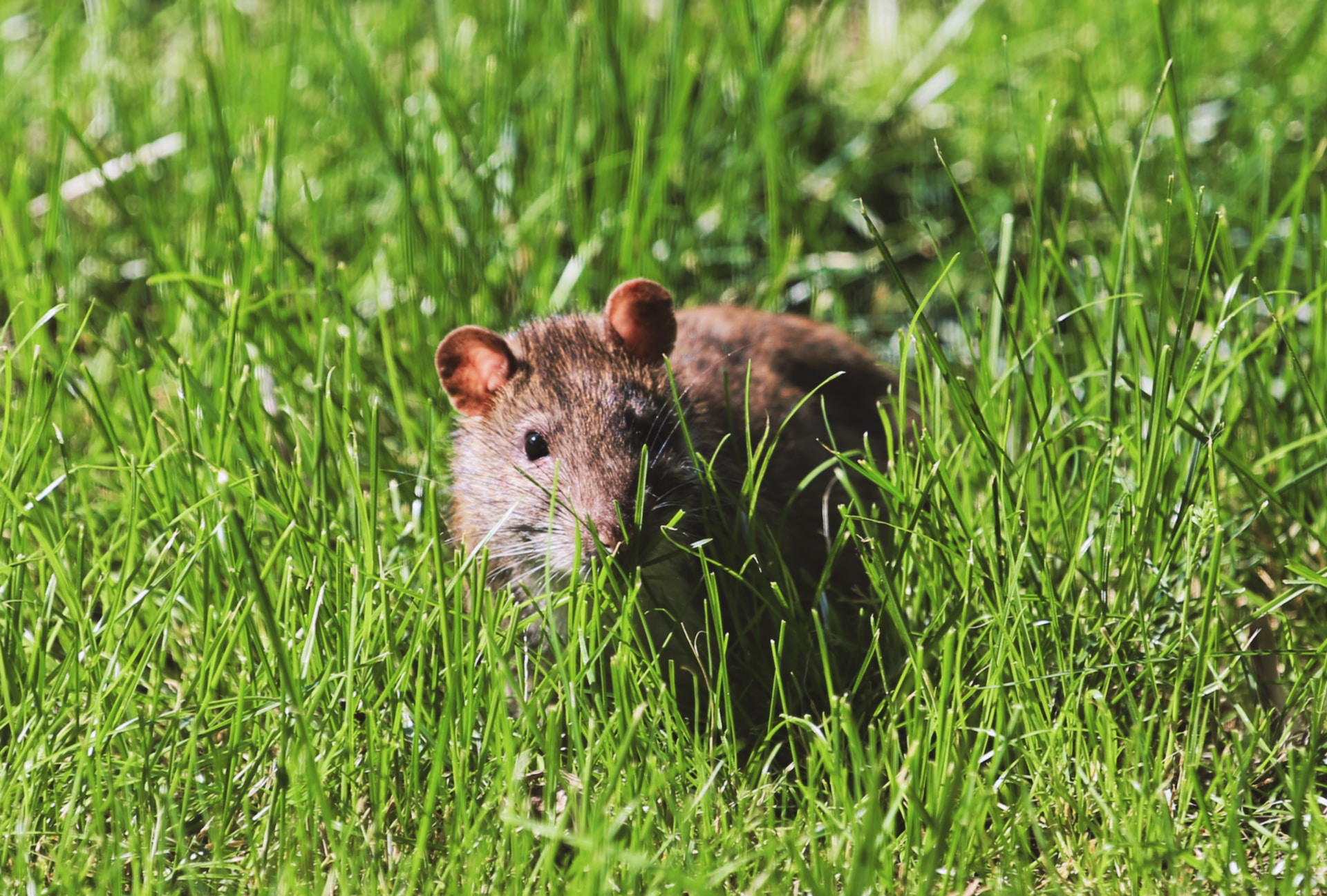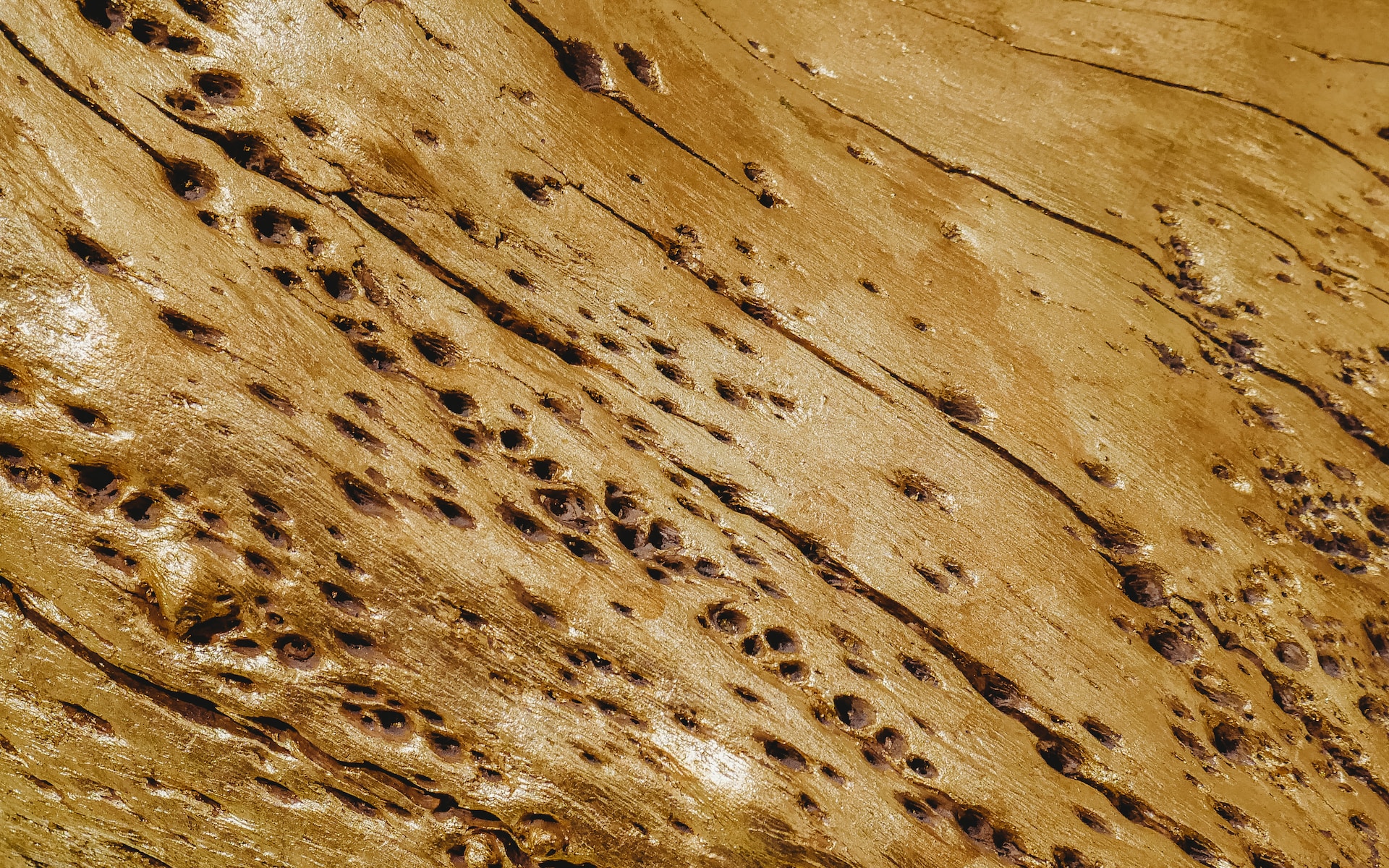How Did You End Up With Bed Bugs?
If you have bed bugs in your home, the most important thing to do is contact a pest control company to exterminate them. These bugs are resilient and hard to get rid of completely. Do-it-yourself approaches often fall short, and professionals know how to get rid of the bugs faster and more effectively.
What you should do next is figure out how the bed bugs likely entered your home so you can avoid reintroducing them again in the future. Look at four primary ways in which bed bugs enter a home.
1. Bedbugs May Enter With Used Furniture
If you recently bought used furniture, the bed bugs could have hitched a ride with it. The furniture’s previous owner got rid of it for a reason, and sometimes that reason is that they’ve had a bed bug infestation.
Never pick up furniture that has randomly been left by the side of the road or in a dumpster; it’s quite likely to carry bed bugs. Avoid buying used upholstered furniture too. Even if it has been steam cleaned, it may harbor bed bugs. The steam does not fully penetrate the upholstery, so it won’t kill bugs that have burrowed further into the stuffing.
If you want to buy used furniture, opt for hard items made from wood, melamine, and other cleanable materials. Do clean these items and check these surfaces for bed bugs before bringing them into your home — bed bugs do sometimes hide in lamps, wooden tables, and hard chairs.
2. Bed Bugs May Come From a Hotel
Did you recently stay in a hotel, at a bed and breakfast, or at a friend’s house? You may have brought bed bugs home with you — it only takes two to start a whole infestation. Even luxurious, high-end hotels have had problems with bed bugs, so you must be extremely vigilant when you travel.
- Inspect your room and bed for bed bugs before you settle in or sit on the bed. Look especially along the mattress seams and behind the headboard.
- Keep your suitcase far from the bed, and zip your bag closed between uses.
- Bring your clothing and other soft items home in sealed bags. Wash them in 120-degree water and dry them on high immediately after returning home.
If you do find bed bugs in a hotel or another accommodation, do not unpack anything. Find an alternative place to stay, and ask for a refund.
3. Bed Bugs May Come With a Guest
If you recently had a guest in your home, they may have brought bed bugs with them. To prevent future guests from spreading bed bugs to your home, follow these guidelines.
- Avoid stacking guests’ coats and clothing on your bed.
- Have guests leave their shoes at the door. Vacuum the mat underneath the shoes after your guests leave.
- Launder all bedding and furniture slipcovers in hot water after guests come into contact with them.
If you are hosting a guest who you know has bed bugs in their home, ask them to change into clean clothing once they arrive, launder their clothing, and use a mattress encasement to protect your guest bed during their stay. People who have had bed bugs know what a hassle they are and will understand your need to take these precautions.
4. Bed Bugs May Enter From a Neighboring Apartment
If you live in an apartment building, the bed bugs could have entered your apartment from a neighboring one. The bugs sometimes hide between the walls and crawl into neighboring apartments through the outlets. In addition to hiring a pest control company, in this case, talk to your landlord and neighbors. If other residents have bed bugs, the best approach is to have all apartments treated at once.
If you think bed bugs might be coming from a neighboring apartment, move your bed and other furniture away from the walls. Encase your mattress in plastic, and ask your landlord to caulk openings or crevices in the walls.
The information above will help you keep bed bugs from coming back after treatment. Contact Environmental Services Pest Control, LLC , if you are dealing with bed bugs in the Montgomery County area.
Pests That May Invade When the Weather Turns Cold
There’s a chill in the air, and winter is not far off. If you’ve been dealing with mosquitoes, wasps, and other outdoor pests all summer and fall, you’re probably looking forward to the break. But winter does not mean perfect freedom from pests — it just means you need to focus on different ones. Certain pests, like the ones below, may start moving into your home as the weather turns cold.
German Cockroaches
Some bugs hibernate in the winter, but German cockroaches are not one of them. If these roaches can find a warm place, like the space between your home’s walls, they will keep reproducing all winter long. By the time spring comes, your home could be totally overrun by these disease-carrying pests.
Aside from actually seeing the cockroaches, signs you may have an infestation include:
- Unexplained oily, musty odor
- Droppings that look like coffee grounds along your walls or in the backs of cabinets
- Shed skins from roaches
Do not assume that roaches will die off on their own over the winter. Have an exterminator get rid of them now while their population is small.
Rats
Rats are pretty resilient creatures, but they need food and shelter to survive the winter. When the temperatures start dropping, they may move into your attic, basement, or crawlspace. Rats not only spread disease, but they can tear apart your insulation, terrorize your pets, and stain your walls and floors with their urine and feces.
Take some time to seal any holes in your foundation, secure your trash cans, and clean up debris in your yard this fall. Rats will be less attracted to your home and less able to enter.
Mice
Mice seek warm places during the winter too. They’re a bit harder to exclude from your home than rats since they can fit through holes the size of a pencil eraser.
Check your attic and basement for signs of mice since these are the areas they tend to invade first. Mouse droppings are about 1/4 inch long and are often seen along walls and in the backs of cabinets. You may see tiny mouse footprints on dirty floors, and you may hear mice scurrying or chewing at night.
Mice can chew through wires, PVC pipes, and wooden items, especially in the winter when other food and nesting materials are scarce. If you have dealt with mysterious electrical problems or tiny plumbing leaks, look into the possibility that mice are to blame.
Bats
If bats find their way into your home in the fall, they may hibernate in your attic or crawlspace throughout the winter. However, that does not mean they’re not a problem. The bats may occasionally wake up and roam your house in search of food and water. As they roam, they present a threat to you and your pets since they could be carrying rabies and other diseases.
If you hear or see bats in the winter, but they go quiet, do not assume they are gone. They have probably just gone back to sleep — which makes it easy for a pest control company to remove them.
Raccoons
Raccoons like to spend weeks on end curled up sleeping during the winter, although they are not true hibernators. As the weather starts to turn cold, they start searching for the perfect, cozy spot to nest. That perfect spot may be your home.
If you see a raccoon in your home, do not panic. Contact a wildlife removal expert to trap the raccoon since they carry rabies and could be dangerous. Then, take steps to ensure no more raccoons can make their way in. Patch holes in the attic or crawlspace walls, get rid of wood and brush piles, and seal up your trash bins.
Although the cold weather gives you a break from insects like mosquitoes and ants, you do have to be wary of the pests above. If you have been dealing with fall and winter invaders of any species, contact Environmental Services Pest Control, LLC. We proudly serve customers throughout Montgomery County and the surrounding areas.
7 Amazing Facts About Mice
They have beady little eyes and tiny feet, and they love to eat your cereal. But while mice are annoying household pests, they have a little more to them than that. The following are seven interesting facts about mice.
1. Mice Come in Many Varieties
The most common species of mouse is the house mouse, or Mus musculus. However, numerous other species of mice exist throughout the world. They also vary in color and habitat. The white-footed mouse, for example, is dark brown with a white belly and is throughout southern Canada and the Central and Southeastern United States.
2. Mice Originated in Asia
Mice are now all over Europe and the Americas, but experts think they originated in Asia. Traders who visited Asia first brought them to Europe. Additionally, you can still find the house mouse throughout Asia. Two different subspecies are also in northern and southern Asia.
If you want to move to avoid mice, think again. Few places on the globe exist where mice do not live. They do not live on Antarctica, but even Australia and New Zealand have mice.
3. Mice Are Pregnant for About 20 Days
The typical mouse litter contains five or six young, but litters can be as large as 12. The large litter size and short pregnancy mean mice can reproduce very quickly. This is why you need to deal with a mouse infestation quickly. One mouse can turn into 60 over the span of a year.
4. Mice Vary Their Sleeping Habits by Environment
You have probably heard that mice are nocturnal. While this is true, this is not exactly the whole truth either. House mice often sleep in the day and are active at night, since that is when homeowners are not out of bed to scare them. However, in nature, mice are most active in the morning and evening because predators are less active then.
5. Mice Do Not Love Cheese
So many animated movies show mice enjoying cheese, and countless images of mousetraps with cheese bait exist. However, cheese is not as appealing to mice as you might think. In one study , researchers tested whether mice preferred cheese, peanuts, or grapes. Mice almost exclusively chose the peanuts. One chose the grape, but none went for the cheese.
6. Mice Have Teeth That Grow Constantly
Like rabbits and guinea pigs, mice have front teeth that continue to grow out of their jaws for as long as they are alive. To keep their teeth from growing too long, mice chew not only on food but also on wood and other hard materials. If you have ever wondered why mice chew your doorframes or other building materials, this is why.
7. Mice Communicate With Body Language and Grooming
If you have ever had mice in your house, you may have occasionally heard them squeaking to communicate. However, this is only one of their many communication measures. They also communicate using body language: swishing a tail is a sign of aggression, and putting the ears back is a defensive posture.
Mice also communicate with grooming. A dominant male will remove hair from the faces of other males so that mice can tell quickly which male is in charge.
Hopefully, you now know a little more about the world’s most common squeaky invaders. If you suspect you may have mice in your home, contact Environmental Services Pest Control, LLC . We are licensed and insured exterminators, and we offer flexible scheduling as well as emergency 24/7 service. We are also happy to answer your questions and concerns about your specific mouse infestation situation.
What Attracts Subterranean Termites to Your Foundation?
Subterranean termites are one of the most feared house pests. They can chew through your wood structures and cause serious damage in a short period of time. In addition, they are difficult to eradicate once they invade. If subterranean termites are common in your area, you must take steps to keep them away from your home — particularly your foundation, since they are known to enter through tiny cracks there.
So what attracts subterranean termites to a particular foundation, and what can you do to make your foundation less appealing to them?
Improper Mulch
Mulch makes garden beds look nice — not only to you, but also to termites. If you push wood mulch directly against your home, that mulch provides a food source for termites and also keeps the soil against your home moist and cool, which is just how termites like it.
If you have garden beds along your foundation, use a mulching material that does not contain cellulose, such as rubber, gravel, or rocks, in those beds. Also, leave a barrier of at least 12 inches between the mulch and the foundation. This practice keeps the soil against your foundation warmer and dryer, which helps keep termites away.
Excessive Shrubbery
Pay attention to the placement of shrubs and bushes in your foundation garden beds. Planting shrubs directly against the home may attract termites to your foundation since the shrubs shade the soil and keep it moist.
Plant new shrubs and bushes at least 3 feet away from your home’s foundation. Keep your plants well-pruned so that branches never touch your home; termites have been known to travel along branches to reach homes.
Stacked Firewood
In an effort to keep firewood accessible, many homeowners stack it against the side of their home. Unfortunately, firewood may contain termites, and placing it against the home provides the bugs with a direct route to the foundation or other wood structures.
Always store your firewood at least 30 feet away from your home. Choose a well-drained site, and stack the wood on pallets to keep the bottom layer dry. Proper firewood storage also helps deter other insects, like carpenter ants and beetles, which are also attracted to decaying, moist wood.
Clogged Gutters or Short Downspouts
Homes are designed with gutters to help drain the water from your roof and direct it away from your home. If your gutters become clogged, however, the water may instead drip down the side of your home, moistening your foundation, your home’s wood framing, and the soil around it.
To keep your foundation dry, clean your gutters twice a year: once in the spring and again in the autumn after leaves have fallen from your trees. Also, take a minute to inspect your gutter downspouts. If they are not long enough to truly carry water away from your foundation, consider adding downspout extenders to divert the draining water.
Leaky Pipes
Leaky pipes are not just an indoor problem. Sometimes the water main, which carries fresh water into your home, may crack and leak below ground. If your yard is wet even when there has been little rainfall, a leaky water main may be to blame. Unfortunately, the excess moisture can also attract termites to your foundation.
You can easily check to see if you have a hidden plumbing leak. Turn off all of your faucets and appliances, and then watch your water meter. If the dial is still spinning, you have a leak somewhere. Have a plumber out to investigate before too much more damage occurs.
Subterranean termites will feed on any wood structure, from a shed to a fallen tree. However, having them come in through your foundation and feed on the wood in your home is the worst. Keep the conditions above in mind, and you should be able to fend them off. Contact Environmental Services Pest Control, LLC , if you have trouble with termites or other pests.
Frequently Asked Questions About Ticks
Summer is a time of year when many people and their pets spend time outdoors. Ticks are one of the hazards of spending time outdoors. Knowing what a tick is, how to identify a tick and how to avoid ticks can help you take care of yourself.
What Is a Tick?
A tick is a parasitic arachnid. Ticks vary in size depending on their age. The younger ones are the size of a poppy seed, older ones are the size of an apple seed. Adult ticks have eight legs and a tear-shaped body. Ticks are found in tall grasses, especially near fields and at the edge of wooded areas.
What Are the Feeding Habits of Ticks?
Ticks drink blood from their host. They can bite at any time of year, but they're most active in summer when the nymphs are abundant. They attach themselves to mammals that walk through tall grasses, then feed by inserting their head into the mammal's skin.
After attaching itself to a person, a tick will walk around the person's body in search for a suitable location. After finding the right spot, the tick will insert its head into the skin of the person. This process of looking for a place and then beginning to feed can take multiple hours.
A tick can feed on one person for 36 to 48 hours or more. The best way to tell how long a tick has been on the body of a person is by observing the tick's size. Ticks can gain 120 times their normal weight by ingesting several millimeters of blood at one time. The bigger the tick, the longer it's been on the body.
Do Ticks Spread Diseases?
Yes, ticks spread diseases. The most well-known disease that ticks can spread is Lyme disease, but ticks carry many diseases. One tick can carry as much as three disease-causing bacteria at one time.
Different types of ticks tend to spread different types of diseases. However, ticks do not begin the transmission of diseases immediately upon biting. In fact, a tick that has been feeding for less than eight hours is unlikely to have transmitted any diseases. A tick that has been on the body for less than 24 hours is unlikely to spread Lyme disease — many ticks don't infect their host with Lyme disease until they've been feeding for 36 to 48 hours.
How Can You and Your Pets Avoid Tick Bites?
People can avoid tick bites by wearing long pants and tucking their pant legs into their socks while walking through tall grass. Ticks are most common near wooded areas populated with deer, so anyone who lives near one such area may find ticks on their property.
Pets are vulnerable to ticks, so the best way to prevent pets from ticks is to prevent ticks from infesting your property. Make sure you cut your grass regularly and clear away brush and yard waste as soon as it's been cut down. If you live in a high-risk area or have seen ticks on your property before, surround your property with a three-foot-wide path of mulch or gravel to prevent ticks from entering your lawn.
Can Pest Control Services Control Ticks on Your Property?
Yes, pest control can spray a lawn for ticks. If you're a property owner and you have ticks on your property, contact a reputable pest control company in your area to have your property sprayed for ticks.
If you have more questions about ticks, contact a reputable pest control company in your area. At Environmental Services Pest Control, LLC, we strive to answer all homeowner questions about ticks and other pests. For more information, contact us today.
4 Wasps You May See in or Around Your Home
Wasps play an important role in the food web, consuming certain species of insects and keeping their populations in check. However, because wasp stings can be dangerous and wasp nests can cause notable damage to your home, you don’t typically want to find wasps on your property.
The U.S. is home to several different kinds of wasps that you should look out for. Since each one has its own habitat preferences and habits, you should know how to distinguish between them.
1. Yellow Jackets
Yellow jackets are commonly mistaken for large bees, but in fact, they are a species of wasp. They are named for the yellow bands on their abdomen. You can distinguish them from bumblebees by looking at the texture of their bodies. Bees have little hairs on their bodies, whereas yellow jackets are smooth. These wasps have very painful stings, and they can sting more than once.
Yellow jackets build their nests from wood fibers mixed with saliva. These nests are usually found in old logs, burrows, or crevices in your home’s structure. Yellow jackets live in large colonies of up to 4,000 insects , and their nests can grow quite quickly, so if you find a nest, have it removed as soon as possible.
2. Mud Dauber
Mud daubers, sometimes known as mud wasps, are a group of related insect species that build their nests out of mud. Usually, these wasps are black in color. They have long, slender bodies up to one inch in length, and their waists are very narrow. Mud daubers are what many people picture when they picture a wasp.
Mud daubers are unlikely to sting. However, the nests that they build, once abandoned, can be taken over by more aggressive wasps like yellow jackets and hornets. For this reason, you should always remove mud wasps and their nests when found on your property.
Common places to find mud dauber nests include under the porch ceiling, under eaves, or between walls. You’re most likely to see these insects if you have a wet, muddy yard.
3. Paper Wasps
Paper wasps also have a classic wasp appearance. Their bodies are brown, sometimes with a few yellow or red markings. They have narrow waists and very long, slender legs. Most are about 3/4 inch long. Paper wasps are not overly aggressive, but they will sting if threatened, so use care when exterminating them.
Paper wasps are named for the paper-like appearance of their nests. You’re most likely to find a nest hidden in a shrub or hanging from a fence. In the fall, when the weather turns cold, paper wasps sometimes find their way into homes.
4. Bald-Faced Hornets
Although hornets and wasps are often thought of as different creatures, hornets are actually a subset of the wasp family. Bald-faced hornets are related to yellow jackets and are similarly aggressive, but the two species do differ in appearance. Bald-faced hornets are mostly black with white faces. They’re about 1/2 inch long with smooth, slender bodies.
Bald-faced hornets build their nests suspended from the ground, usually hanging from a tree or other structure. Since these insects are highly aggressive and sting easily, you should never attempt to remove a nest yourself. Always rely on an expert exterminator, and stay far away from the nest in the meantime.
Finding wasps of any kind on your property can be scary, but an exterminator can remove the nest and restore your peace of mind. If you spot wasps or other stinging insects on your land, contact Environmental Services Pest Control, LLC . We service Montgomery County and the surrounding areas.






